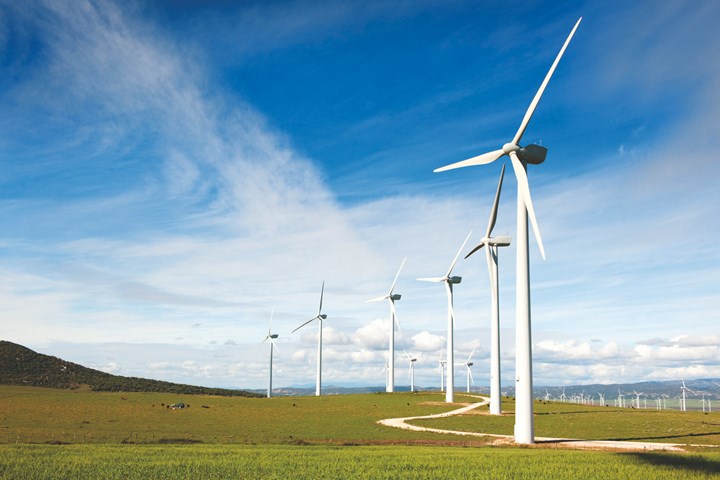DNV lowers the partial reduction factor γm1 of wind turbine blades using aging-resistant PU
The adjustment certification, which gives lower safety margins to polyurethane (PU) resin used in rotor blades, marks broader blade design and applications for Covestro.

The new certificate on the age-resistance of the polyurethane (PU) resin of Covestro is another argument for its use in the production of wind rotor blades. Photo Credit: Covestro/Guillermo Perales Gonzalez
Covestro (Leverkusen, Germany) has received the first adjustment certification from DNV (Høvik, Norway), the wind power industry's certification organization, for the so-called partial reduction factor γm1 of wind turbine blades made from age-resistant polyurethane (PU). This factor is an important indicator of the long-term aging resistance of rotor blades and is also used to measure their long-term service performance. It is also the first time that DNV has evaluated and adjusted this factor, Covestro says.
To do so, DNV evaluated complex and rigorous comparative tests as well as theoretical analysis by Covestro. Based on design standards for wind rotor blades (DNVGL-ST-0376:2015), DNV confirmed and adjusted the partial reduction factor γm1 of polyurethane resin processed using the vacuum infusion process. This certification applies to the Baydur 78BD085 PU resin and the Desmodur 44CP20 hardener from Covestro.
According to Covestro, resin materials must prove their long-term aging resistance before they can be given lower safety margins that allow for broader rotor blade design and application. Compared to epoxy resin, which is often used to manufacture rotor blades, PU resin — a new material in the field of wind rotor blade manufacturing that is rapidly gaining recognition in the market — shows better mechanical properties. With a lower γm1 value, Covestro says, rotor blade designers will be able to take full advantage of the resin, while also achieving greater design freedom. PU is also integral to the production of lighter blades with the same length, an important factor as blades get longer.
“We are pleased that the excellent performance of polyurethane has been recognized by a wind power industry’s certification authority,” remarks Dr. Irene Li, vice president of research and development for Covestro's Tailored Urethanes business entity in Asia Pacific. “As more and more polyurethane rotor blades are installed, we look forward to further innovations in polyurethane resin and the rapid development this will bring to the wind power industry.”
Kim Sandgaard-Mørk, executive vice president of DNV’s Renewable Energy Certification Division, adds, “Wind turbine blades are becoming lighter and larger, while favorable feed-in tariffs for wind energy are gradually being reduced. This poses a challenge for cost control in wind rotor blade production and development. The wind power industry is therefore looking for new material applications while optimizing designs to reduce costs while ensuring optimal performance. By demonstrating the performance of polyurethane under the new blade standards and obtaining a new safety factor certification for its resin products, Covestro is blazing a new trail for blade design.”
Related Content
-
A new era for ceramic matrix composites
CMC is expanding, with new fiber production in Europe, faster processes and higher temperature materials enabling applications for industry, hypersonics and New Space.
-
Novel dry tape for liquid molded composites
MTorres seeks to enable next-gen aircraft and open new markets for composites with low-cost, high-permeability tapes and versatile, high-speed production lines.
-
Plant tour: Joby Aviation, Marina, Calif., U.S.
As the advanced air mobility market begins to take shape, market leader Joby Aviation works to industrialize composites manufacturing for its first-generation, composites-intensive, all-electric air taxi.
















